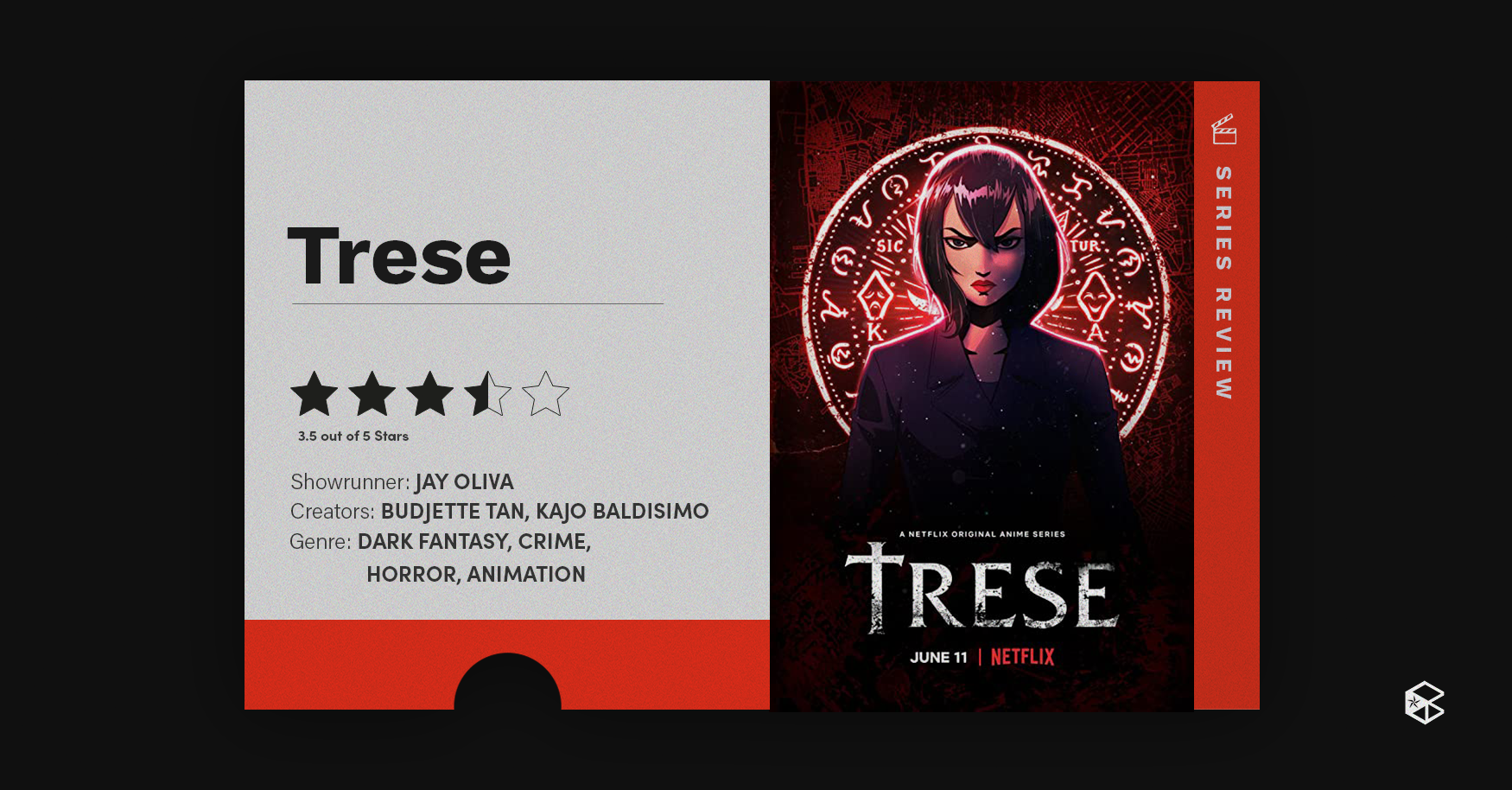Based on the acclaimed Filipino komik series from Filipino writer Budjette Tan and artist Kajo Baldisimo, Netflix’s “Trese” premiered globally last June 11. Co-produced by Indonesia and Singapore, the six-episode anime-influenced series was released in two languages; English and Filipino, with their respective sets of cast.
In the city of Manila, nothing is as it seems. Amidst the contrasting worlds of grime and glam, Manila is a place where creatures such as the infamous aswang, small-yet-dangerous duwende, the towering kapre, and the part-horse and part-man tikbalang pose as criminals in the city and silently walk among us.
With haphazardly-formed allegiances, self-serving schemes, and an unquenchable thirst for vengeance spreading across all fronts, the city is on the precipice of chaos. Only one person can unite the worlds of humans and creatures—a detective with exceptional tactics and magical abilities.
Like its source material, the Netflix adaptation revolves around Alexandra Trese (Liza Soberano, Shay Mitchell) as she investigates a series of crimes in Manila which are tied to the fabled Philippine mythological creatures. Alexandra’s allies include “The Kambal,” comprising of twins Crispin and Basilio (Simon dela Cruz, Griffin Puatu) as her bodyguards, Captain Guerrero (Apollo Abraham, Matt Yang King) of the local police task force, the trusted bartender of “The Diabolical” Hank Sparrow (Christopher Carlo Caling, Jon Jon Briones) and Alexandra’s late father Anton Trese (Eugene Adalia, Carlos Alazraqui).
From page to screen
The first four books of the comics series contain standalone chapters and cases featuring Alexandra Trese, mirroring when an actual detective arrives at the crime scene and solves the case. While starting with book five, the chapters are connected that are under a main story arc for the particular volume from the series.
The Netflix adaptation took inspiration from the first three books of the series and moulded it into a serial narrative with a continuous plot. This gives light to the backstory of Alexandra Trese and her family early on. This is a contrast to the original comics where readers get to see her shine in solving the cases in the standalone chapters. As a Netflix series, this approach to the adaptation makes room for the binge-factor and quickly finishes each episode to finish its entirety.
But having a six-episode first season truly felt short. Audiences didn’t get to spend more time with the characters and have their breathing room. But with the benefit of the doubt, there is definitely more anticipation on what a possible second season has to offer. This first season has thrown the doors of this world open wide for audiences across the globe.
As far as adaptations go, Trese has pulled out all the stops. The art style is not only faithful to the source material, but also creates an added layer of depth. Keeping Trese’s world in black and white, the way it was in the komiks would have created more of an audience impact all around. However, the choice to depict this world in color vividly captured the grit, grime, and magic of Manila and it's creatures.
The sound design was spot-on—certain creatures are sure to send chills down your spine. The show brought in two casts to bring each character’s voice to life; one in English and one in Fiipino. The English cast is made up of actors who are of Filipino descent. With Trese’s setting and cultural references though, we recommend watching the show in Filipino. While Soberano’s Alexandra tended to be monotonous at times, the Filipino version better captures the story as a whole.
A new age of Philippine mythology
Showcasing Philippine mythology to a universal audience, “Trese” forges more potential of portraying these kinds of Filipino stories with the series’ world building. Taking notes from what made the komik series popular to critics and readers, the Netflix adaptation could soar to greater heights.
Philippine mythology has always been a pivotal genre in Philippine komiks. Countless stories on
the lower Philippine mythology has been told. But it’s with Philippine independent komiks which truly re-imagined mythological lore in a modern setting. From being depicted as mysterious and dangerous wanderers of the forests and threats to society during the Golden Age of Philippine Komiks.
Filipino comic book writer and artist Arnold Arre’s “The Mythology Class” reinvigorated the genre by transporting these creatures into an epic fantasy setting during the 1990s and ushered in a new age of Philippine komiks. In fact, “Trese” writer Tan was introduced to “The Mythology Class” and the combination of local folklore and the modern urban setting during his senior year in high school.
Filipino audiences are hungry for new takes on Philippine mythological creatures and “Trese” can introduce the aswang, manananggal, and tikbalangs to the world.
With all this being said: here’s to a renewal for a second season. Perhaps, the future is bright for more Philippine komiks adaptations. Now, we hope Jerrold Tarog’s “The Mythology Class” film adaptation gets the ball rolling.
Are you excited to meet Alexandra Trese and the rest of the Philippine mythological creatures? The first season of “Trese” is now streaming on Netflix.


